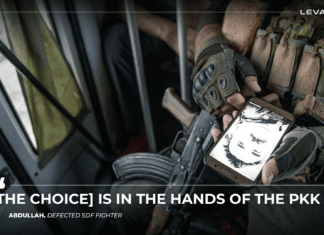
Last night Iran launched a significant ballistic missile attack on Israel, escalating tensions in the region following assassinations of key Iranian and Hezbollah leaders. This strike came as a direct response to the killings of Ismail Haniyeh, head of Hamas’ political bureau, in Tehran, and Hassan Nasrallah, the leader of Hezbollah, along with Abbas Nilforoushan, a commander of the Iranian Revolutionary Guard Corps (IRGC), in Beirut.
The IRGC announced the attack in a public statement, declaring that dozens of ballistic missiles had been launched at military and security targets within Israel. Iranian state news agencies reported that up to 300 missiles were fired, targeting sites across the country, including Tel Aviv and Jerusalem. The missiles reached Tel Aviv’s skies, and some were intercepted in Jordanian airspace.
Israeli media confirmed missile impacts in several cities, marking one of the most significant direct confrontations between Iran and Israel in recent history. The attack comes following months of attacks on Iranian proxies and facilities in Tehran, Syria, and Lebanon. Nasrallah’s killing just days ago exacerbated the situation. Iran warned Israel of retaliation, and on Tuesday evening, the Revolutionary Guard declared that the attack was in line with their “commitment to defending themselves and maintaining regional security.”
The Iranian forces emphasized that the missile attack would not cease if Israel retaliated, warning that any response would lead to “violent strikes.” In response to the Iranian missile launch, Israel’s military published footage showing missiles falling in the Old City of Jerusalem. Although no official Israeli response has been confirmed, an unnamed Israeli source told Channel 12 that “a retaliatory operation was imminent.”
Avichay Adraee, a spokesperson for the Israeli military, revealed that US intelligence had warned Israel of an impending missile strike from Iran. However, Israel had not detected any aerial threats prior to the attack, according to statements on X (formerly Twitter). The Israeli government has yet to provide detailed information about the extent of the damage or casualties.
The US played a critical role in intercepting Iranian missiles. US forces stationed in Al-Tanf base, Syria, shot down at least 20 of the missiles aimed at Israel. President Biden ordered the US military to assist Israel in defending against the attack.
The strikes reportedly also hit areas in the West Bank, including Jerusalem and Jericho, where one Palestinian civilian was killed by shrapnel. The extent of other casualties and material damage has yet to be fully assessed.
The latest escalation mirrors a similar incident in April of this year when Iran launched a missile attack on Israel in response to the bombing of its embassy in Damascus. This new wave of attacks demonstrates Iran’s enhanced missile capabilities, including the use of hypersonic missiles. Tehran claimed to have struck three Israeli military bases, a notable shift in the intensity of the conflict. However, like the previous attack, many analysts question Iran’s intent to inflict real damage that could ignite a full-scale war with Israel.
In addition to the missile barrage, the broader regional conflict continues to unfold. Assad regime forces have intensified their attacks on Idlib and Aleppo, targeting civilian areas with artillery and drones. The Syrian Civil Defense, also known as the White Helmets, reported ongoing bombings that have killed civilians and caused widespread panic. The missile strikes mark a new phase of heightened hostilities between Iran and Israel, with both sides exchanging threats of further military actions.








